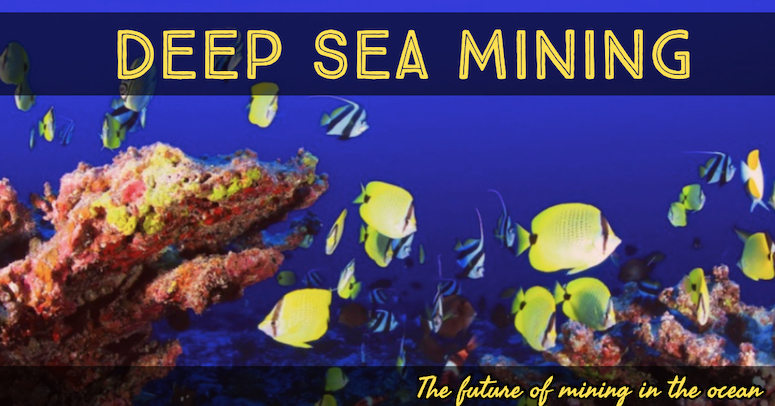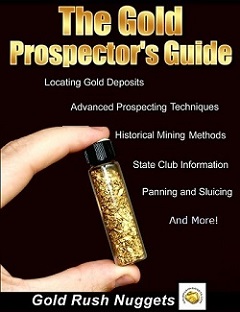
While space is often considered the final frontier, from a mining perspective it is the exploration of the sea that merits attention. Our seas also have much to offer in the way of mineral resources, and up until now they have been mostly untapped.
Let’s examine what exactly can be dug up from our seafloor. There are many concerns with this new form of mining, but there is also huge potential as the vast majority of the Earths mineral resources remain hidden underwater.
Finding Ore Deposits on the Ocean Floor
With millions of square miles of ocean floor that have not yet been explored, how are potential mining areas identified? This is a science all unto itself and will likely be a field of research that will grow exponentially in the near future.
Deepsea formations occur in different types of deposits, namely polymetallic nodules and sulfide deposits. Polymetallic nodules are potato-sized balls of ore that can be found suspended in mud on the seafloor. Most of these are known to be found in the Clarion-Clipperton zone in the eastern Pacific, and are known to contain nickel, copper, cobalt and manganese.
Polymetallic sulfides, on the other hand, are vent-like deposits that look similar to smokestacks. These are created when hot water from the earth’s crust merges with cold water in the ocean and deposits various minerals as a result. Sulfide deposits can be found at average depths of 1,000 to 4,000 meters and are known to contain copper, lead, zinc and some amounts of gold and silver. These can usually be found in areas with much volcanic activity.
Deep Water Gold Mining
Minerals like gold actually exist in the ocean waters themselves, but in a highly diluted amount. Falkner and Edmond published a study in an issue of Earth and Planetary Science Letters showing that there is roughly a gram of gold for every 100 million metric tons of water in the Atlantic and north Pacific oceans. This has been known for quite some time, but currently there is no economical way to extract gold directly from sea water.
The real mineral wealth isn’t in the water itself, but lies a couple of miles beneath down the seafloor. In all likelihood, there are some honest-to-goodness “gold rushes” down there that we haven’t yet found. Getting there will be no easy task.
Imagine how costly the process will be? One must first know exactly where on the seafloor mineral resources are hiding, be able to travel to the seabed, then find a way to break through the rock and mud and extract the minerals. At depths of a few hundred feet this would be quite challenging, but consider the task of mining at depths of thousands of meters!
Also Read: Is Future Mining in Antarctica a Real Possibility?
Exploration for Underwater Minerals
The idea that there may be vast amounts of untapped mineral reserves beneath our waters was first floated in the 1960s. When J.L. Mero wrote Mineral Resources of the Sea, he described vast deposits of manganese nodules on the seafloor at depths of up to 5,000 meters. When naval explorers were sent out to explore the area in the decades that followed, the resources found were much less than initially expected. When factoring in the high cost of deep-sea exploration as well as dropping metal prices, it’s no wonder that deep-sea mining faded into the background for several years.
However, with recent advancements in technology as well as increased demand for metals across the globe, a new era of deep-sea mining has unfolded over the past decade. Today, submersible remotely operated vehicles (ROVs) are sent underwater to explore prospective sites ahead. These ROVs are equipped with drills and various other tools to collect mineral samples, which geologic teams can then analyze. Upon determining that the site is profitable, a mining station is then setup in the area for large-scale extraction.
Also Read: The Great Alaskan Gold Rush to the Beaches of Nome
Mining Technologies
There are two common ways to go about this, the first of which is through hydraulic suction mining. Through this method, a large pipe is lowered to the seafloor, and the polymetallic nodules from the site are transferred via suction to the mining ship. These nodules are gathered by a self-propelled collector that crushes the sea floor in areas where minerals are deemed to be located. A second pipe transfers the tailings, or mine dumps back to the site from which it was extracted.
The second methodology for large-scale extraction is called the continuous-line bucket system (CLB). True to its name, this method operates conveyor belt-style, running cables from the mining ship to the seafloor. The mining ship extracts the minerals and the tailings are returned to the ocean. Think of this as an even bigger version of an old bucket-line dredge!
Environmental Risk and Concerns
These methods are often criticized for the environmental damage and disruption to the ecosystem they cause. There is a risk of chemical spills or the water columns and food networks becoming toxic due to the residue, and organisms living within the seabed will be permanently disturbed.
Regulations and supervision will be critical to safe deep sea mining but considering past polluting events at mining sites on land, the thought of new underwater mining is bringing up valid concerns. Poor management of our oceans has been well established over the course of human history, and there isn’t a lot of promise that ocean mining will be done safely.
Underwater Mining Ventures Underway
Despite these concerns, the growing demand for metals has resulted in various large-scale firms undertaking deep-sea mining projects in recent years. One example is Nautilus Minerals Inc., a Canada-based mining firm focused on underwater exploration.
In 2018, they developed and launched a ship called the Deep Sea Nautilus, which is a 745-foot ship that can mine 39,000 tons of ore a mile underwater! The Deep Sea Nautilus makes use of advanced ROVs that prepare and extract the seabed deposits, while another mixes pulverized minerals with seawater forming a slurry. This slurry is pumped up to the Deep Sea Nautilus through a hydraulic pump for processing.
Nautilus Minerals currently makes use of this fleet to mine gold and copper in their site called Solwara I off Papua New Guinea. This area called the central and eastern Manus Basin has shown significant gold potential in the area’s sulfide deposits.
Nautilus Minerals is only one of many companies preparing for large-scale deepsea mineral extraction. With the global population relying more and more on information-based technology, the rise of the smartphone society and the interconnection of businesses across the globe, the demand for metals to build the necessary hardware for this is ever-increasing.
Deep Sea Mining in the Coming Decades
This perpetual growth in demand bumps up against environmental concerns. How do we go tapping our mineral resources underwater while preserving and protecting the numerous ecosystems below? Finding the answer falls to the International Seabed Authority (ISA). The ISA was established by the United Nations to regulate seafloor mining in international waters. Though a daunting task, it is certainly one that is crucial to ensuring deepsea mining is done correctly and sustainably.
There have been 29 exploration contracts granted to various exploratory firms backed by governments all over the world. Germany, Japan, China, India, Korea, Russia, France and even small island states like Singapore, Kiribati, Nauru and Tonga are involved in these exploratory initiatives. Currently, the ISA targets to finalize the code on regulating deepsea mining and meet with member countries by 2020.
While the lure of untapped mineral wealth underwater is certainly very real, the industry has the opportunity to establish the proper rules before any damage is done. If this is done correctly, the future of deepsea mining will certainly increase in potential even more. However, we must remember that cooperation between countries is key, both in respecting international waters and developing deepsea mining technology that is environmentally undisruptive.
Next: Minerals Associated with Natural Gold

